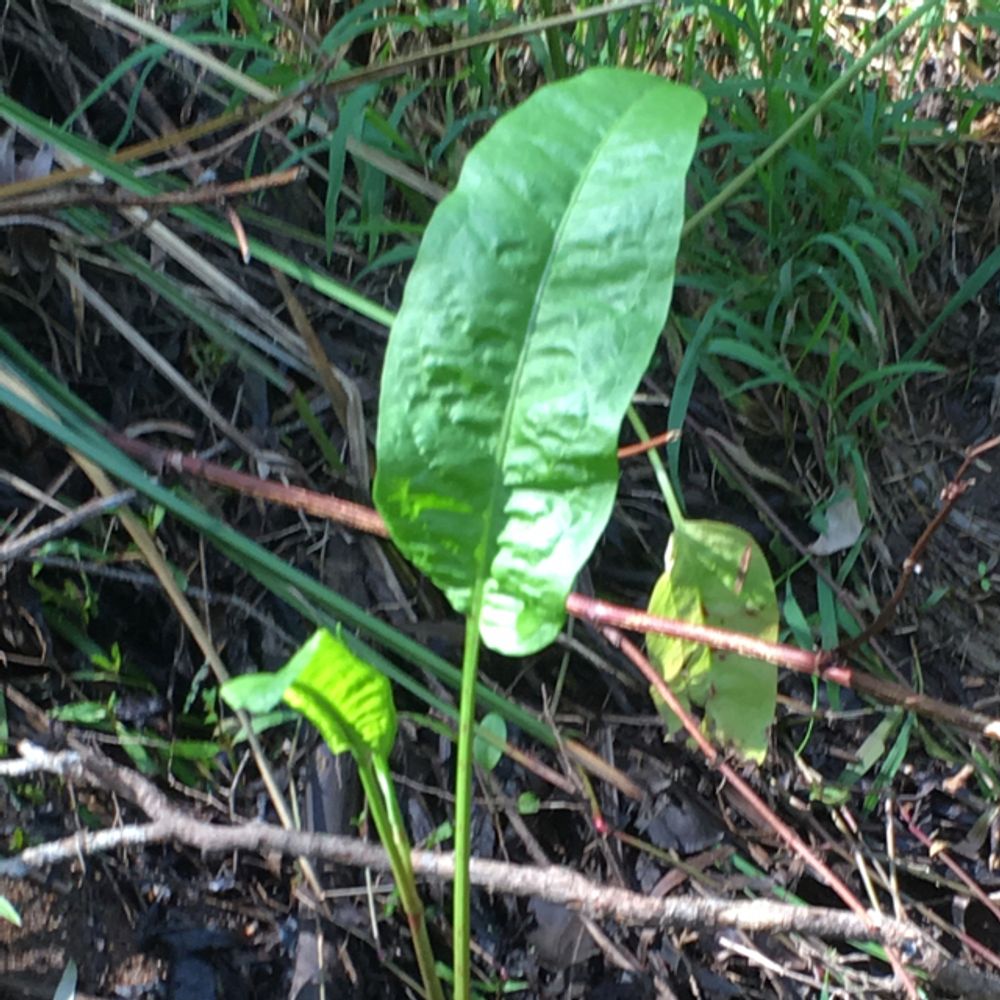Dock
(Rumex leaves)

Description
The docks and sorrels, genus Rumex L., are a genus of about 200 species of annual, biennial, and perennial herbs in the buckwheat family Polygonaceae. Members of this family are very common perennial herbs growing mainly in the Northern Hemisphere, but various species have been introduced almost everywhere. Some are nuisance weeds (and are sometimes called dockweed or dock weed), but some are grown for their edible leaves. Rumex species are used as food plants by the larvae of a number of Lepidoptera species, and are the only host plants of Lycaena rubidus. They are erect plants, usually with long taproots. The fleshy to leathery leaves form a basal rosette at the root. The basal leaves may be different from those near the inflorescence. They may or may not have stipules. Minor leaf veins occur. The leaf blade margins are entire or crenate. The usually inconspicuous flowers are carried above the leaves in clusters. The fertile flowers are mostly hermaphrodites, or they may be functionally male or female. The flowers and seeds grow on long clusters at the top of a stalk emerging from the basal rosette; in many species, the flowers are green, but in some (such as sheep's sorrel, Rumex acetosella) the flowers and their stems may be brick-red. Each seed is a three-sided achene, often with a round tubercle on one or all three sides. These plants have many uses. Broad-leaved dock (Rumex obtusifolius) used to be called butter dock because its large leaves were used to wrap and conserve butter. Rumex hymenosepalus has been cultivated in the Southwestern US as a source of tannin (roots contain up to 25%), for use in leather tanning, while leaves and stems are used for a mordant-free mustard-colored dye. These plants are edible. The leaves of most species contain oxalic acid and tannin, and many have astringent and slightly purgative qualities. Some species with particularly high levels of oxalic acid are called sorrels (including sheep's sorrel, Rumex acetosella, common sorrel, Rumex acetosa, and French sorrel, Rumex scutatus), and some of these are grown as leaf vegetables or garden herbs for their acidic taste. In Western Europe, dock leaves are a traditional remedy for the sting of nettles, and suitable larger docks (such as broad-leaved dock R. obtusifolius or curled dock R. crispus) often grow conveniently in similar habitats to the common nettle (Urtica dioica). In traditional Austrian medicine, R. alpinus leaves and roots have been used internally for treatment of viral infections. Rumex nepalensis is also has a variety of medicinal uses in the Greater Himalayas, including Sikkim in Northeastern India.
Taxonomic tree:







